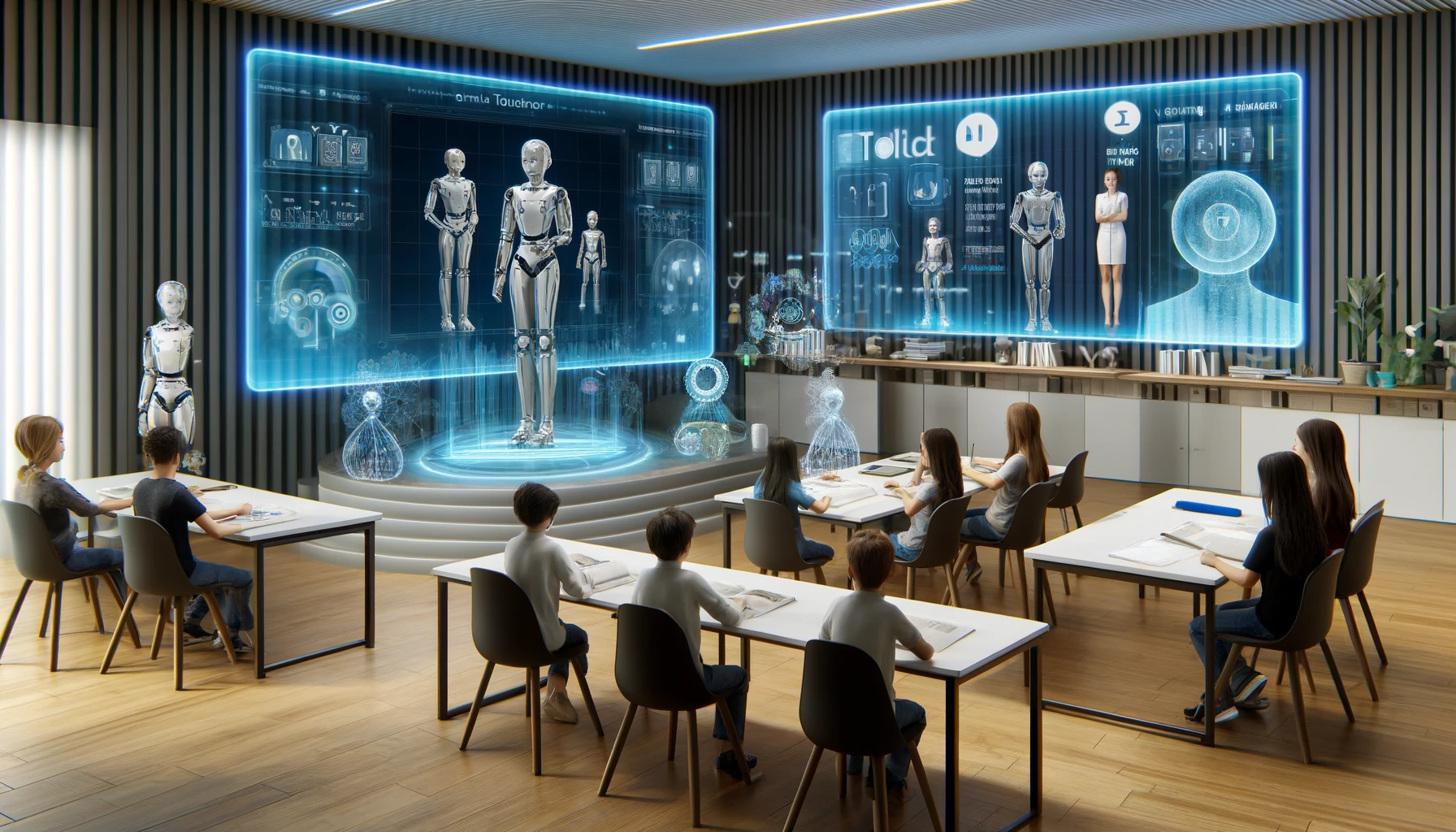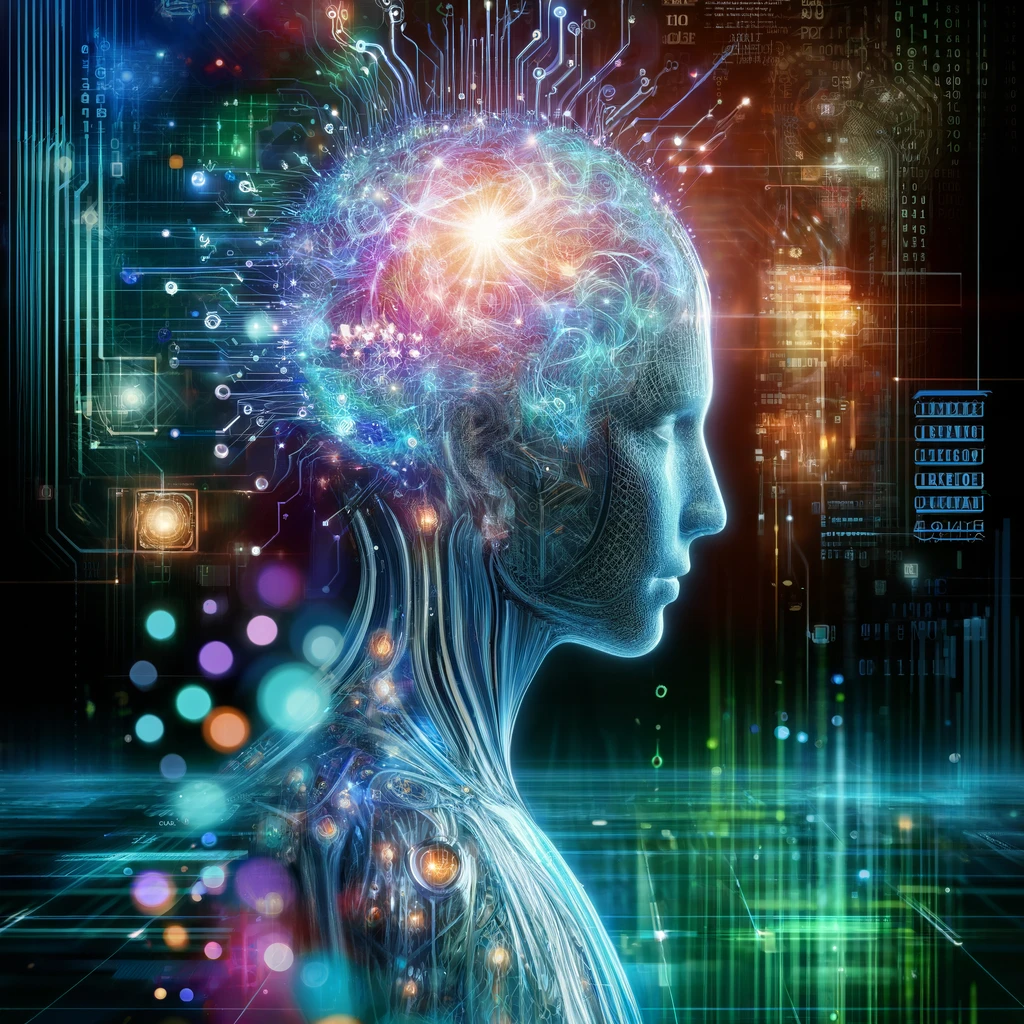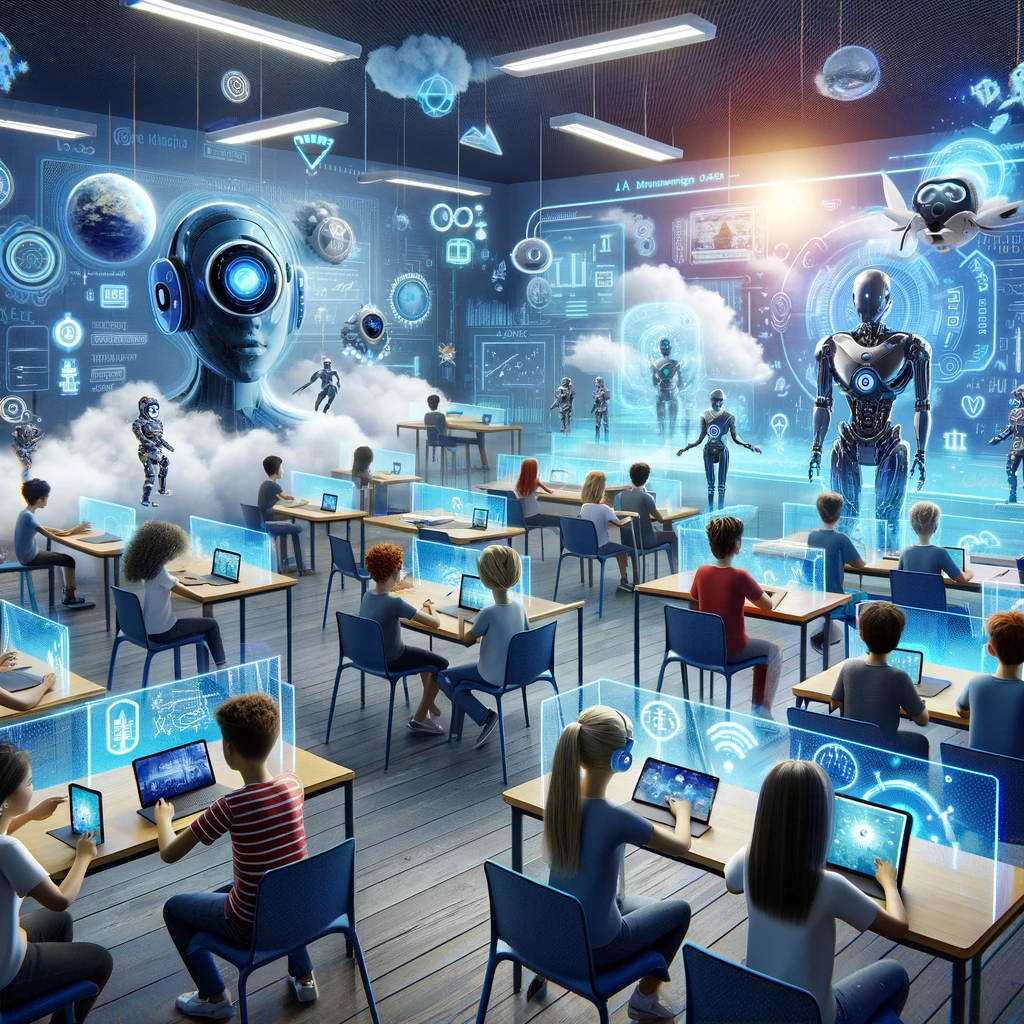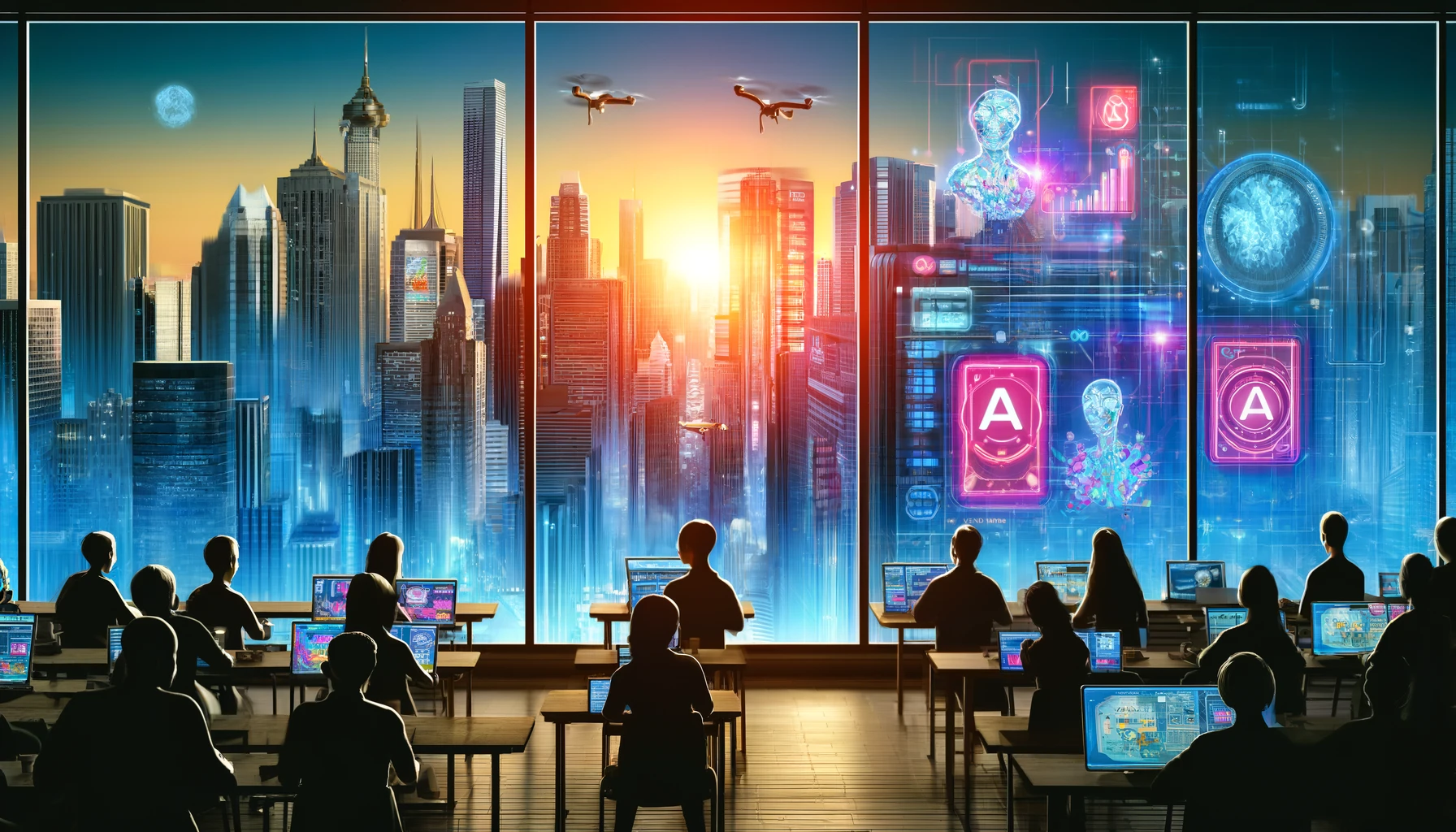Today, AI is not a futuristic idea but a genuine part of education as our digital world changes fast. AI is changing how we teach and learn. It's a big advancement. It is reshaping traditional methods. AI stands out as a significant catalyst in this transformation. AI personalizes learning and makes administrative tasks easier. These changes were once hard to imagine.
Traditionally, standardized curricula and one-size-fits-all teaching approaches have characterized education. Today's students have diverse needs and learning styles. Thus, education must be more personalized and adaptable to meet these requirements. This is where AI comes into play. AI assists educators in personalizing learning experiences. It achieves this through the use of machine learning algorithms and data analytics. This means tailoring learning to fit each student's strengths, weaknesses, and preferences.
Moreover, AI is not confined to the classroom. It helps with school administrative tasks, making them more efficient and effective. AI simplifies administrative tasks like grading and predicting student performance. This frees up educators to concentrate on personalized teaching and supporting students.
This article talks about AI in typical classrooms. It explains how AI alters teaching methods and student learning. We use theEducation Hub'sguide to understand how schools use artificial intelligence. The guide helps us learn about AI in schools. This helps us explore different ways we use AI in education and what it means for the future of learning.
AI-Powered Personalized Learning
In traditional classrooms, educators have a challenging job. They must cater to the different needs and learning styles of students. Yet, this challenge is being met head-on with AI-powered personalised learning systems. Adaptive learning platforms use AI algorithms. These algorithms analyze how each student learns and what they prefer. Based on this analysis, educators can adjust the content and pace of learning. This tailoring is done to meet the unique needs of each student. These platforms provide customized learning paths. They make sure students receive personalized instruction and help. This helps boost their engagement and understanding.
Moreover, AI-driven interactive learning experiences offer students hands-on exploration and experimentation opportunities. Students can take part in learning using simulations, virtual labs, and gamified tasks. These methods help make concepts easier to grasp and relate to. Teachers can use AI to make learning environments more engaging. This fosters student's curiosity, creativity, and critical thinking skills. It enhances their learning activities.
Moreover, AI-driven interactive learning experiences offer students hands-on exploration and experimentation opportunities. Students can take part in learning using simulations, virtual labs, and gamified tasks. These methods help make concepts easier to grasp and relate to. Teachers can use AI to make learning environments more engaging. This fosters student's curiosity, creativity, and critical thinking skills. It enhances their learning activities.
Intelligent Tutoring Systems
AI in education shows great potential, especially in creating intelligent tutoring systems ITS. Virtual teaching assistants use machine learning algorithms. They give personalized guidance and feedback to students. In regular classrooms, teachers often can'st give each student personal help. But, with ITS, students get immediate support to help them stick to their learning targets.
Assessing student performance is essential with an ITS. It helps identify areas where they might need extra help. These systems analyze student performance and engagement data. They identify learning gaps and offer specific help. This helps aid students in overcoming obstacles and succeeding academically.


AI-Enhanced Administrative Tasks
AI also transforming how administrative tasks are done in schools and colleges. AI-powered grading systems make grading easier for teachers. This lets teachers spend more time interacting meaningfully with students. Automated grading systems remove the manual grading workload from teachers. They also offer students quicker feedback, making learning more efficient.
Furthermore, AI-driven predictive analytics offer valuable student performance and behaviour insights. This helps teachers spot students who may be struggling and take action early. Educators use predictive analytics to customize student interventions. They analyze attendance, grades, and engagement data for this purpose. This process aims to enhance retention rates and academic achievements.
AI Writing Tools in Education
Good writing skills are crucial for success in school and work today. Such tools, likeessay ai writers, help students improve their writing. These tools are valuable for boosting writing skills. These tools use algorithms for natural language processing. They analyze topics and create well-structured essays covering a wide range of subjects. AI writing assistants give students immediate feedback on their writing. This feedback helps improve writing skills, fosters critical thinking, and upholds academic integrity.
Students can improve their writing skills by using AI essay writing tools. These tools also make writing easier. These tools motivate students to explore different subjects and viewpoints. They help develop creativity and curiosity about ideas. AI essay writing tools help students improve their writing skills and succeed academically.
Augmented Reality and Virtual Reality in Education
AR and VR technologies are changing education, too. They offer immersive learning experiences beyond what traditional classrooms can provide. AR apps enhance learning by merging digital content with the real world. They animate abstract concepts, making learning more engaging. This engagement makes learning more exciting and understandable. Students can use virtual environments to explore historical landmarks. They can also dissect virtual specimens in biology classes. This helps them better understand complex topics.
VR technologies allow students to enter simulated environments. In these environments, they can engage in hands-on learning experiences. Students use virtual reality for immersive learning adventures. They can explore Mars or perform experiments in a virtual chemistry lab. VR sparks curiosity and creativity, making learning dynamic and immersive. Educators can use AR and VR technology. They can create diverse learning environments to meet the needs and interests of modern learners. These environments are rich and multidimensional.
Natural Language Processing for Educational Purposes
NLP technologies are changing how we learn languages. They give students personalized help and feedback. AI platforms for conversations use NLP algorithms. They help students practice speaking and listening in a foreign language. Students interact with virtual tutors in dialogues. These platforms analyze how you speak and give instant feedback. They help you get better at languages in a friendly way.
Students receive personalized feedback on their writing tasks through NLP-based writing helpers. This helps them improve their writing abilities and communicate better. AI-powered writing assistants analyze grammar, syntax, and style. They pinpoint areas needing improvement and offer actionable suggestions. This helps students gain confidence and improve their writing skills.
AI for Special Education and Inclusive Learning
Modern educational systems focus on inclusive education. AI technologies can help diverse learners. AI-powered tools help students with disabilities by offering customized help. These tools include apps for text-to-speech and speech-to-text. So, they tailor help to fit each person's needs, making it easier for everyone to access. These tools let them access educational content and join in classroom activities.
AI-powered personalized learning platforms adjust to each learner's needs and preferences. They provide customized instruction and support based on each individual's strengths and weaknesses. With AI-driven inclusive practices, educators can empower themselves to create learning environments. These environments celebrate diversity, promoting equity and accessibility for all students.
AI's use in everyday education transforms how we teach and learn. AI technologies can improve education by offering personalized learning and intelligent tutoring systems. These advancements enhance engagement, boost outcomes, and foster inclusivity. We can help students excel in the digital age. This involves utilizing AI innovations and addressing ethical concerns. We can create learning environments that support their growth. As we explore AI's role in education, we discover endless opportunities for innovation. These shape the future of learning for generations to come.


